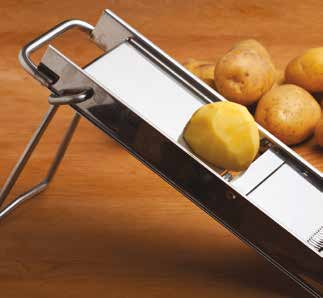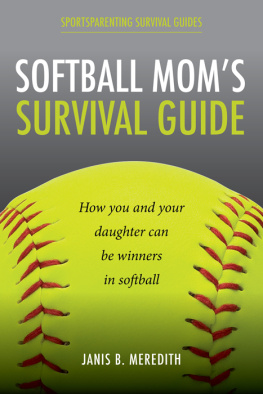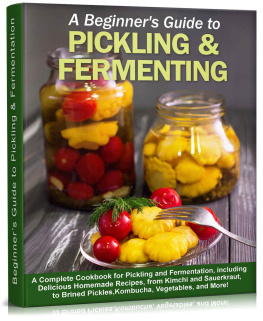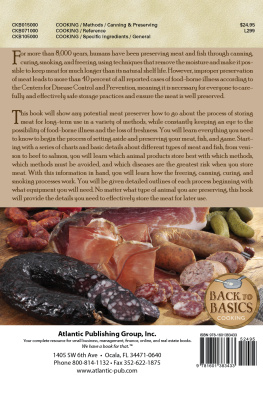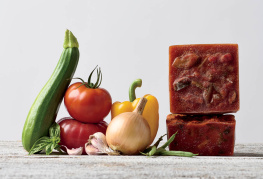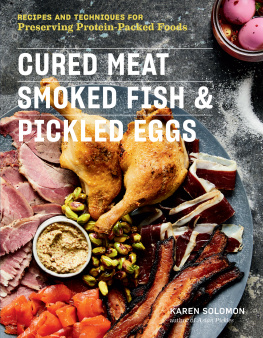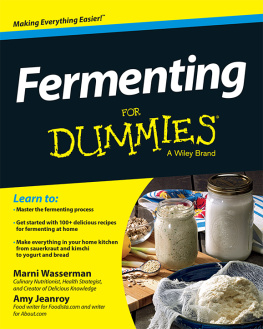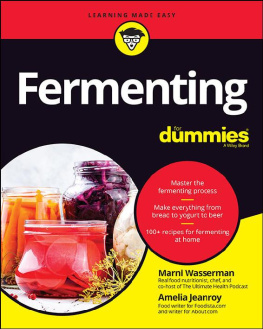All rights reserved. No part of this book may be reproduced in any form or by any electronic or mechanical means including information storage and retrieval systems without permission in writing from the publisher, except by a reviewer, who may quote brief passages.
P.O. Box 748, Woodstock, VT 05091
, back cover: Sylvana Tapia.
DEDICATION
To my sweetheart Richard Orbach, who understood (or at least smiled) when I carried my canning gear across three continents to his home.

CONTENTS
The 21st-Century Pantry

Preserving Everything is a pretty audacious title: How can I claim to write a book that covers preserving every ingredient in existence? Heres the deal: By the time you finish reading this book, not only will you have read through and hopefully tried a few recipes, but youll also understand the method behind the recipes and be able to apply those methods, safely and deliciously, to other ingredients and recipes. Im going to teach you the different techniques of food preservation, what it is about them that safely preserves food, and how to use them to preserve every type of food. So yes, this is a book on preserving everything!
Even in this age of take-out dinners and miniature kitchens, people rely upon food preservation whether they realize it or not. Those raisins you tuck into your kids lunchbox are a dehydrated fruit, that jar of pasta sauce was pressure canned, andif its the real dealthe dill pickle that came with your deli sandwich was lacto-fermented.
In the 21st century, food preservation is more than a way to stock up for the winter, save on the grocery bill, or make some cute food gifts for the holidays. Although it can certainly be all of those things, contemporary food preservation is also a way to reduce your carbon footprint by having locally grown or raised foods on hand year-round. Think about it: How much more fossil fuel gets burned trucking commercial canned tomatoes to you across thousands of miles versus canning your own using tomatoes from your garden or your local farmers markets?
You will find delicious recipes in this book that demonstrate each of the different food preservation techniques. There are must-have pantry basics like canned tomatoes and strawberry jam, but also more playful inventions such as fig jam with wine and balsamic vinegar. In other words, theres something here for novices and experienced food preservationists alike.
And at every step of the way you will understand exactly which component of each recipe is safely preserving the food. Is it the acidity of vinegar, the hotter-than-boiling-water heat of pressure canning, or some other factor? With this book in hand, you wont have to guess: Youll know exactly why the recipe works, and youll even be able to invent your own food preservation recipes with absolute confidence.
I know, I know, Im not supposed to say that. Most food preservation advice absolutely prohibits experimentation. I understand why: Food safety is a life-and-death issue. But instead of scaring folks away and restricting access to knowledge with a do-not-attempt approach, Id rather teach you to be your own expert.
And I do mean expert. Heres the deal: There are some very straightforward food safety necessities that accompany each method of food preservation. These are essential to follow precisely. They are also very easy to follow and to learn. Once you understand what it is about each food preservation method that enables it to preserve food safely, youll know exactly what you can and cannot change about a recipe (in this book or from any other source).
Understanding what makes each method work will also enable you to traverse the wealth of online recipes safely and successfully. There are some excellent recipes out there, but there are also some dubious ones that I would not risk feeding to myself or family. With this book in hand, youll be able to tell at a glance whether a food preservation recipe is trustworthy.
There is a primal satisfaction that comes from looking at a batch of food you put up yourself. Anyone who has ever smiled when they heard a canning lid seal with an unmistakable pop, or tried to look modest when an appreciative gift recipient gasped, You made this? knows exactly what I am talking about. And now its your turn.
Generally Useful Gear

In addition to basic kitchen equipment like mixing bowls, colanders, pots, knives, and stirring spoons, each food preservation method has a few pieces of special gear that are either essential or that make the job much easier than it would be otherwise. But first, here is some gear that you may want to get if you dont already own it. These items will be useful for many, many food preservation projects. None of them is required to make the recipes in this book, but they will make your job easier.
Generally Useful Gear
CHERRY PITTER

If you want to make the Fermented Sour Cherries in the Preserving in Alcohol chapteror any other cherry preservea cherry pitter makes the job so much easier. You can also use an olive pitter. Either one is an inexpensive handheld tool that pops out each cherry (or olive) pit in a second.
A FOOD PROCESSOR
Not mandatory if you dont mind a lot of knife work, but, really helpful for recipes that require fairly large quantities of fresh ingredients to be chopped very small (the Sweet Red Pepper and Cucumber Relish recipe in the Vinegar Pickling chapter comes to mind).
KITCHEN SCALE

Top of the line is a digital scale that can handle large quantities (pounds/kilos) and also accurately measure small amounts (ounces/grams). If you go with non-digital, you may want to invest in two pieces of gear for weighingone to handle the heavier items and a smaller, postal-type scale for more delicate measurements.
MANDOLINE
